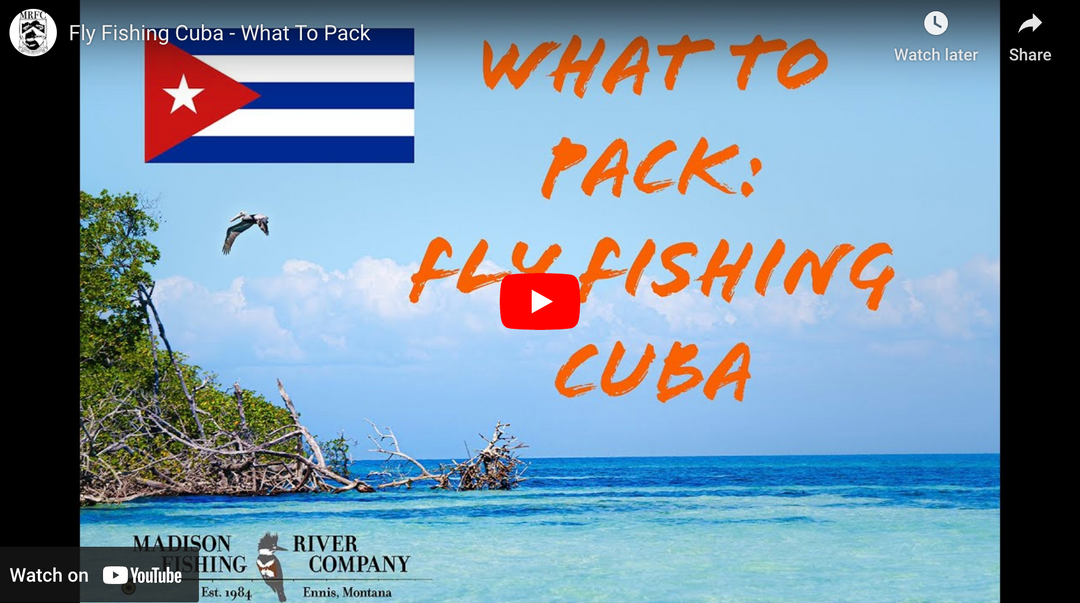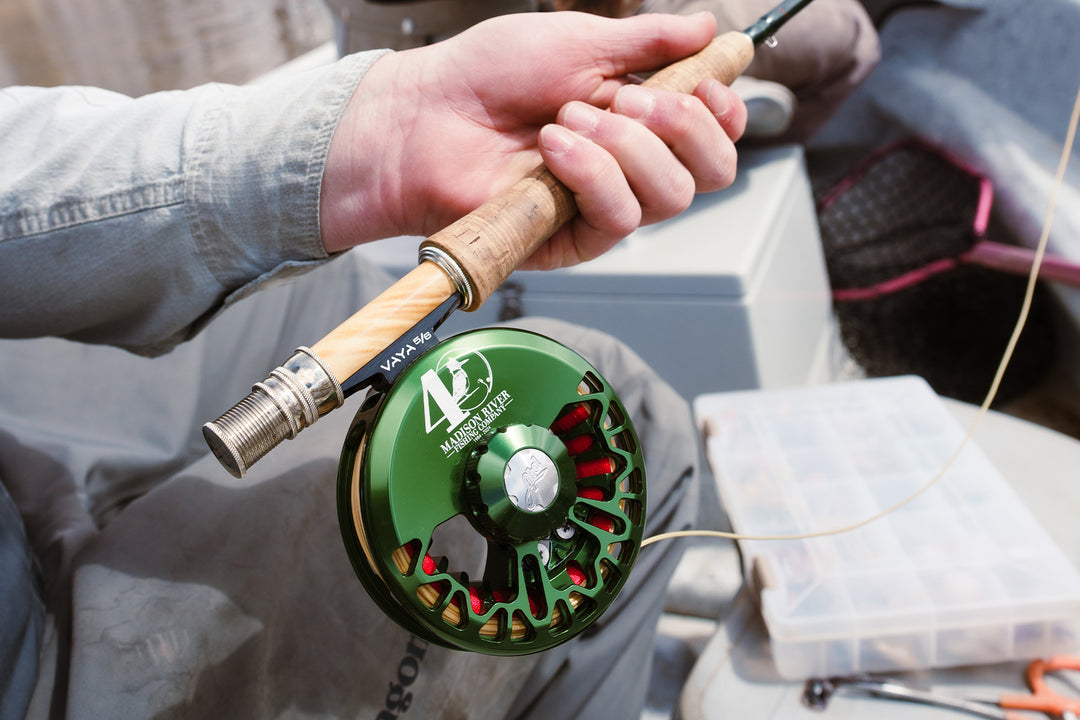Reading Water On the Rivers of Montana


This common occurrence for most guides brings to light the fact that fish are not evenly distributed throughout a river, and many anglers don’t always recognize the best water. If one were to make enough random casts over the water they will eventually catch a few fish, however far greater success can be found by placing each cast over water that is most likely to have not just fish, but actively feeding fish. Being able to look at a stream and predict where the fish are likely to be is called reading the water, and it’s a key skill that differentiates the more advanced, and shall I suggest more successful anglers on the river. Like any skill, it can be developed over time by gaining a little knowledge, then getting out and doing lots of practice.

To start with, you need to understand that trout have three basic needs that must be met. Where they hold in a river at any given moment will largely be determined by what they perceive as the best place to meet as many of those needs as they can. To start with, need number one for most fish is to not be eaten! Sounds silly, but reality for a fish is that everything is out to get them. Herons, osprey, kingfishers, otters, bears, people, and even other fish all consider our trout to be fine dining. To survive, it must have a place where it is hard to be seen or caught. Deep water is what most people think of right away in terms of a safe location, but shelter can also be found from structures like rocks and logs, and also from areas where the water surface is broken up by wave action, making it harder to see what’s below.

Need number two is food. In order to grow from a small trout into a big trout, it needs to consume as much food as it possibly can. Typically when fly fishing we are thinking about the aquatic insects in a stream, but food can also include small crustaceans like shrimp and crayfish, bugs that fall off of shoreline vegetation, and of course, smaller fish. This food is not evenly distributed in the river. Areas of shallow fast water (called riffles) often produce much more in the way of drifting bugs than deep and slow moving water. However when a hatch is occurring, slower calm water may have plenty of bugs that are stuck on the surface film and easy to catch. Over the course of the day, the supply of food available in different parts of the river may change, and to keep eating, the fish may need to move as well.

The last “need” that determines where a fish might hold is what I like to call efficiency. How much energy does it require to find and catch the food that is available. If gaining weight is your goal, running on a treadmill while you try to eat will be far less effective than say standing next to a conveyor belt and just picking up snacks as they move along it. I would also include in this section a certain measure of risk assessment. Would you move into a risky location where you are exposed to predators just to get a single peanut sized snack? Maybe not. But if you were hungry, and there was a big juicy cheeseburger just sitting out there for the taking, maybe the risk would be worth it. The same might be true where there were thousands of small snacks that can be consumed quickly if you are in an exposed area. Think heavy hatch. Fish will expose themselves to more risk if they can efficiently gobble up a lot of food in a short time.

The next consideration you have when looking at a river is understanding the different structures that you see. Flowing water is generally (and loosely) broken down into three basic forms. Riffles, as mentioned before are typically faster and shallower sections where the water flows over and around rocks, typically broken up by waves, bubbles, and “white” water. Riffles are often where the greatest amount of food is drifting into the current. Pools, are the slow deep segments, that often alternate with riffles, and can be found after steep drops, or on the outside of major bends. Runs, are sort of everything in between. Deeper and slower water than riffles, and often extended for longer distances and shallower than a typical pool. Every river is different, and these terms are more for considering relative differences in the water you are looking at as opposed to specific definitions. Spread throughout the water can be various other structures such as rocks and boulders, logs, and area’s where the bank is undercut. These structures are always important to find, as they are often going to provide some form of shelter from both predators and current, and provide great locations where fish can meet all of their needs at the same time.

As you look at the water, you can now break down what you area seeing in the river, combined with the understanding of what makes a good location for your quarry, then start your casting approach based on what you find. Sometimes, like when the fish are actively rising to a hatch, locating the fish is pretty obvious. When you don’t see action on the surface, you need to look a little more carefully. The basic ideal spot is any location where the fish can hold without fighting a lot of current, has some level of shelter, yet also has access to faster water that brings lots of food. Again, think of the analogy of standing next to a conveyor belt, not having to walk fast, and being able to pick up food as it passes by. Rocks, logs, and undercut banks generally provide shelter from predators. They also provide a patch of slower water where the fish can stay relaxed, and if there is faster water running past, there will be a great food supply that they can take advantage of.

As the size of the stream gets larger, obvious structure may be less apparent, so you will need to look at more subtle clues presented by currents and the surface of the water. While there are times that food may be present in such great quantities that fish move right into the fast water of a riffle, they will still make every effort to minimize the current that they have to fight. If you look carefully at the shoreline, you will generally notice a small patch of slower moving water that may extend a foot or more from the bank, even along stretches of fast water. If there is enough depth to provide cover (which can be as little as eight inches at times) fish will hold in these “pockets” and feed in the faster water just outside. These pockets are generally identifiable as smoother water, often with a bubble line between the smooth water and the faster water. Learning to look for pockets or seams where fast moving water meets up with slower moving water is a key to locating fish holding locations. This can even be seen mid-stream when unseen rocks or gravel bars disrupt the current. Casting along bubble lines where currents meet is almost always a good strategy.

Another thing to look for is when fast water from a riffle dumps into a pool or a run. Try to picture the water movement in 3D. Often the fast water will be relatively shallow, moving over the slower water beneath. This also sets up a great situation where the moving water provides visual cover, the fish can hold in slower water below, and feed on bugs coming along in the faster water above. This also occurs when water moves across gravel bars that create a mini riffle mid river that produces food, with shelter and calm water for fish just downstream. Again when the fast water meets the deeper slower water, look to the sides of the main current. Bubble lines and smooth water will be indicators as to where fish might set up feeding positions.

You may have noticed that I have not spent a lot of time talking about the deep sections of pools. While these areas provide great shelter and slow current, they are often places where fish go to seek safety, or to rest when not feeding actively. You can still catch fish in the pools, especially during a hatch, or in smaller streams where the pool is the only safe place to stay, but I have learned that when fish are feeding actively, they often move out of the deepest water.

To me, breaking down the different parts of a stream, reading the water and imagining where the fish will be, is one of my favorite parts of fishing. There are lots of subtleties that you will learn to appreciate as you spend more time on different kinds of water. It is kind of like solving lots of little puzzles over and over as I move up the stream. Nothing is more satisfying than coming up with a prediction of where a fish should be, putting a perfect cast over that spot, then seeing the fish take your fly.
By Scot Bealer
Scot first started guiding in the 1980’s, and has fished extensively through the rocky mountain west and many other parts of the world. When not on the water, he is typically out working with his wife, Lea Frye, doing wildlife photography. See their work at https://www.leaf-images.com, or follow them on Instagram @lea.f_images























Leave a comment